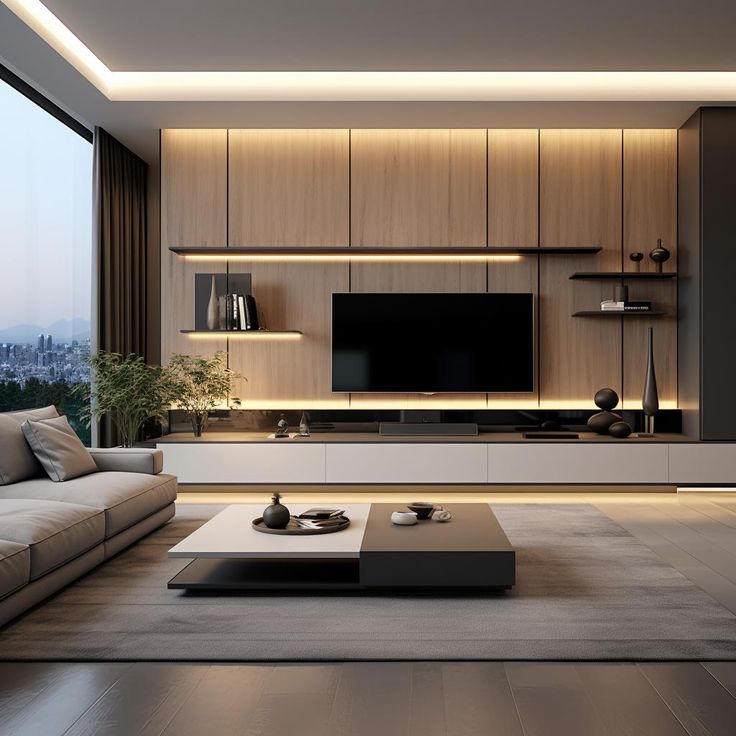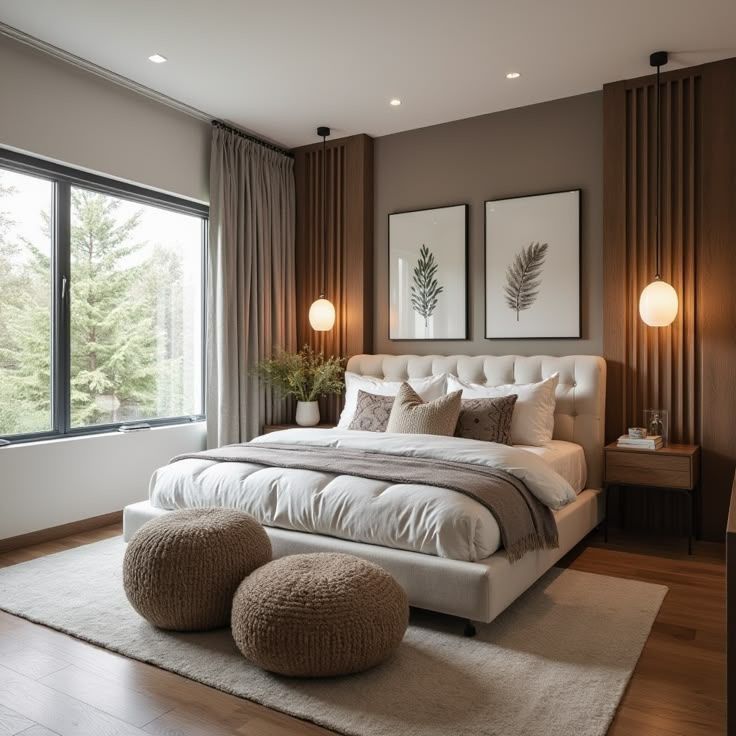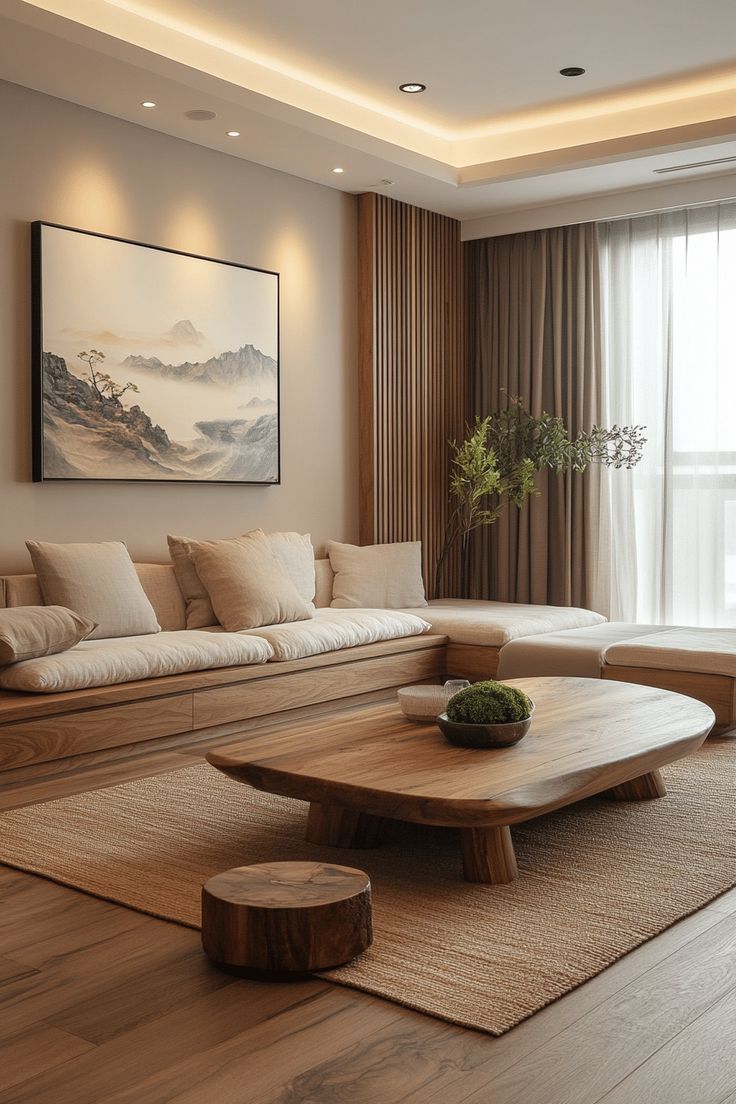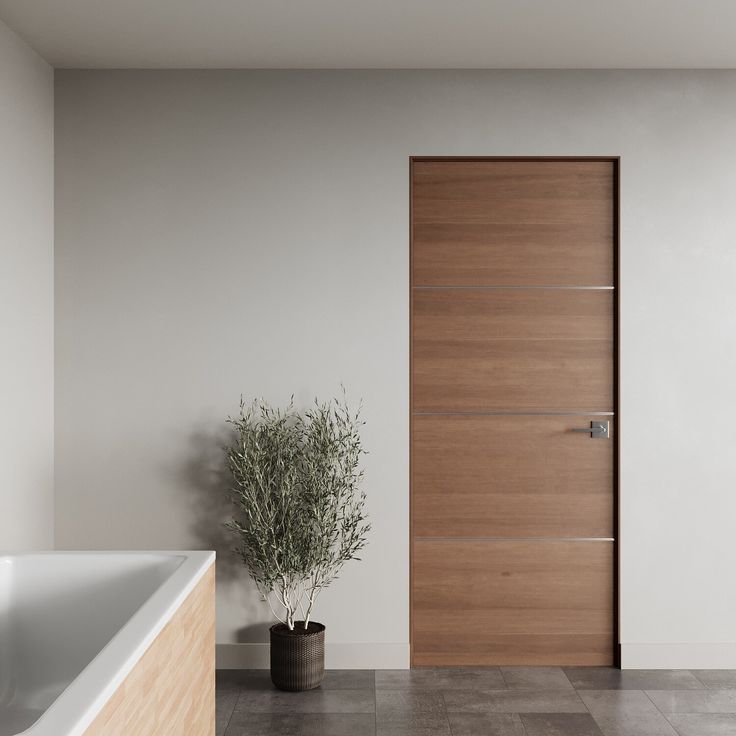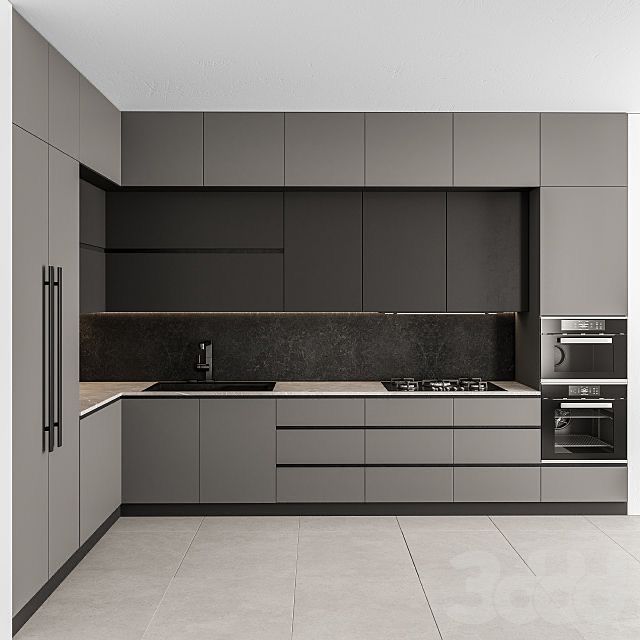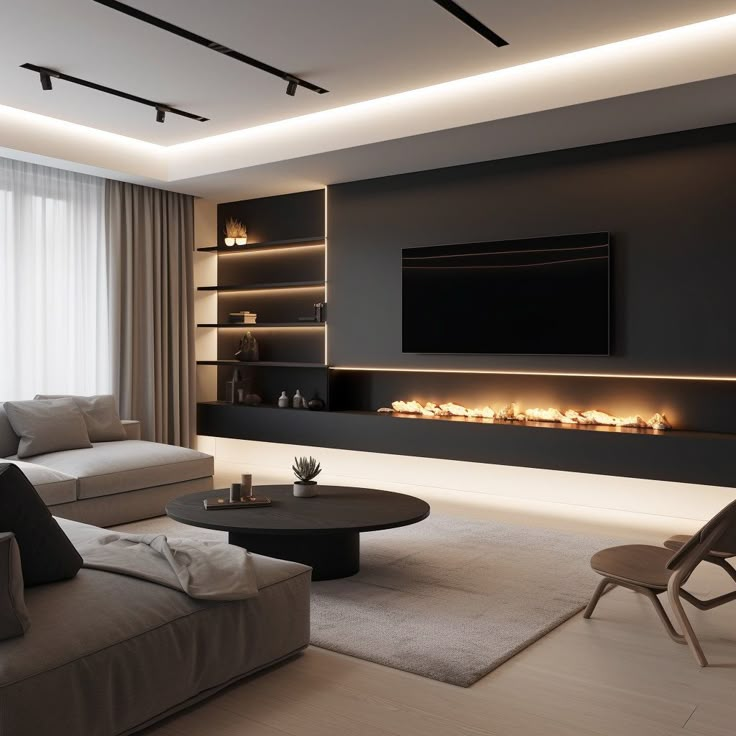Top 10 Master Bedroom ldeas For Your Home In 2025
September ,29 2025
Your master bedroom should do more than look beautiful—it should restore you. In 2025, design trends balance calming palettes, tactile comfort, smart technology, and discreet storage to create restful sanctuaries that work for real life. Use these 10 master bedroom ideas to plan a space that feels luxurious, functional, and uniquely yours.
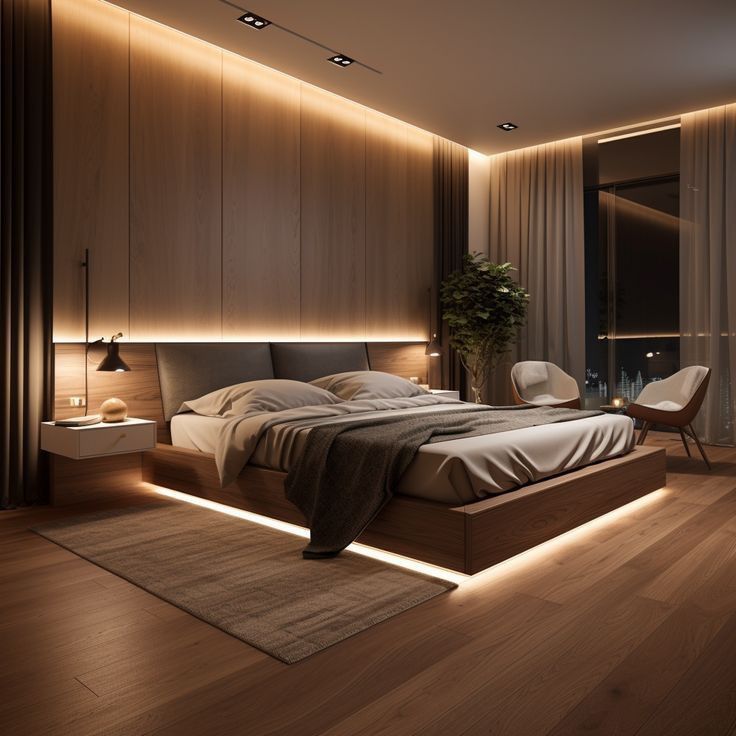
Source
✅Introduction
Your master bedroom should do more than look beautiful—it should restore you. In 2025, design trends balance calming palettes, tactile comfort, smart technology, and discreet storage to create restful sanctuaries that work for real life. Use these 10 master bedroom ideas to plan a space that feels luxurious, functional, and uniquely yours.
✅1. Palette Power: Warm Neutrals + Moody Accents
Soft whites, mushroom, taupe, and sand create a calm, sun-washed foundation for a master bedroom, while moody accents—ink blue, forest green, and mulberry—add depth without feeling heavy. Aim for a soft, low-contrast palette on the largest surfaces (walls, curtains, rug) and reserve the saturated hues for elements you can change seasonally: headboard, throw, cushions, or artwork. Warm undertones keep the scheme cohesive—think creamy whites over stark blue-whites, and oiled oak or walnut over grey woods. Choose matte or eggshell wall finishes to diffuse light and enhance the restful vibe.
1、Try this: Paint walls a soft taupe or mushroom, then anchor the room with a deep-colored upholstered headboard (ink blue velvet or forest-green linen). Pair with timber nightstands in walnut or light oak for warmth. Layer percale sheets with a linen duvet and a mulberry throw, then echo that accent in two cushions or a small artwork. Finish with a large, low-pile rug in sand to ground the bed and soften acoustics.
2、Pro tip: Keep contrast low for a sleep-friendly master bedroom. Limit sharp light/dark jumps; instead, step colors gently from light (walls/curtains) to mid (rug/bed linen) to dark (headboard/art). Use warm 2700–3000K lighting and lined drapery to maintain a cocooning, evenly toned atmosphere.
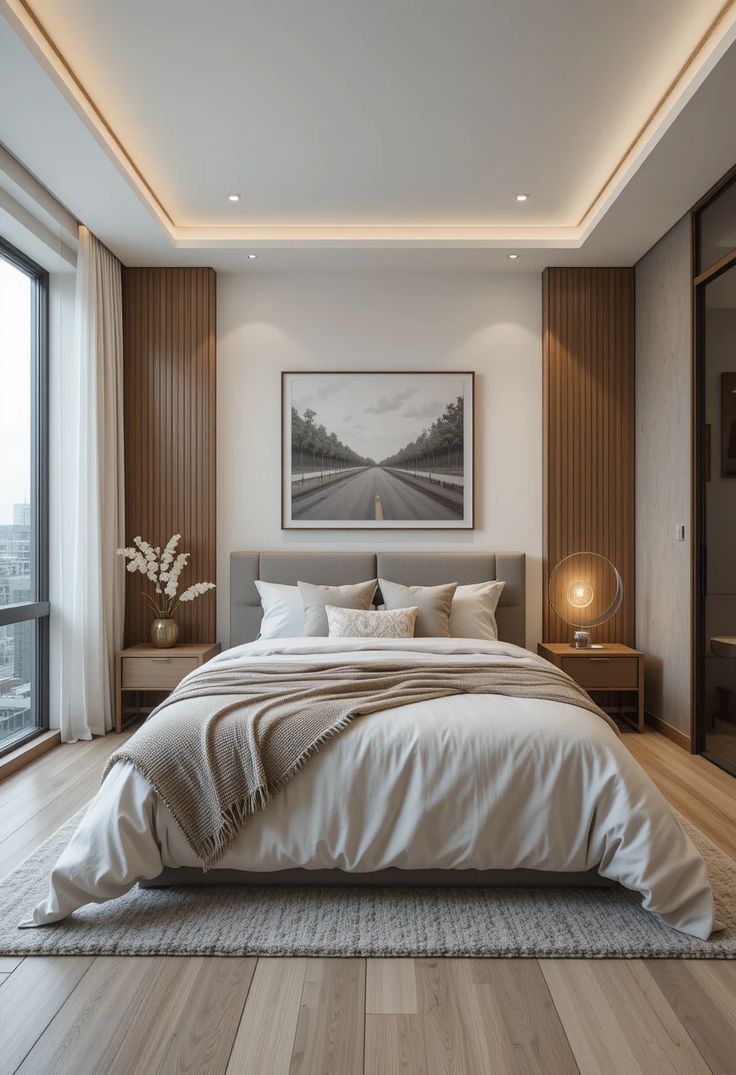
✅2. A Statement Bed & Upholstered Headboard
The bed is your visual anchor, so pick a headboard that sets the tone—sculpted for softness, channel-tufted for tailored lines, or a wall-spanning panel for a luxe, built-in look that improves acoustics. Aim for a headboard width that’s 3–6 in (8–15 cm) wider than the mattress on each side so the bed feels grounded. If you’re using a full wall panel, align seams with nightstand edges for a custom effect and mount on a French cleat for easy leveling. Keep mattress top at ~24–26 in (61–66 cm) so the bed is comfortable to get in and out of, and choose nightstands within ±2–3 in (5–8 cm) of that height.
1、Sizing: Leave 24–36 in (60–90 cm) clear on both sides for circulation and linen changes. A headboard height of 48–60 in (120–150 cm) creates presence without overwhelming typical 8–9 ft (2.4–2.7 m) ceilings. Position reading sconces so the light source sits ~20–24 in (51–61 cm) above the nightstand (or 54–60 in / 137–152 cm AFF) and 6–8 in (15–20 cm) outside the bed edge to avoid glare. A 9×12 ft rug under a king (or 8×10 ft under a queen) visually anchors the setup.
2、Layering: Start with crisp percale sheets (cool, breathable), add a linen duvet for relaxed texture, then top with a ribbed knit or bouclé throw across the foot of the bed. Use a simple pillow stack: two sleeping pillows + two Euro shams + one lumbar for polish. Keep the palette tonal and introduce one accent (e.g., a velvet lumbar) to achieve that quiet, hotel-level comfort without visual clutter.
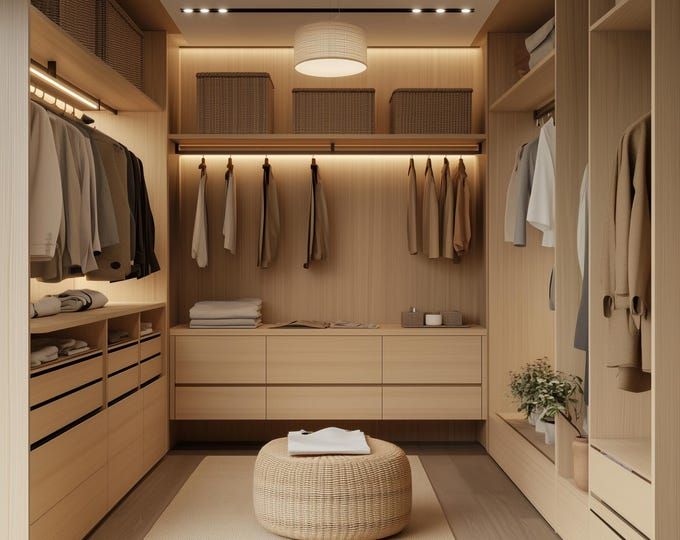
✅3. Layered Lighting for Sleep & Style
Layer your master bedroom lighting so it’s calm, flattering, and functional at any hour. Start with ambient light from a flush/semi-flush fixture or a small chandelier to wash the room evenly (put it on a dimmer and its own circuit). Add task lighting at the bed—hardwired or plug-in swing-arm sconces for reading, plus a focused lamp at a vanity or desk. Finish with accent lighting: a soft cove/ceiling LED strip, under-bed or toe-kick LEDs on motion sensors for night paths, and inside-wardrobe strips with door sensors. Keep controls intuitive: a master scene at the entry (“On/Off”), bedside dimmers for each sconce, and a low-level “Night” scene.
1、Color temperature: 2700–3000K in the evening promotes relaxation and better melatonin cues. Aim for CRI 90+ so fabrics and skin tones look natural. Reserve cooler 3500–4000K for closets if you prefer crisp color matching, but keep it separate from the bedroom scene.
2、Upgrade: dimmable bedside sconces free up table space and look elevated. Mount the light source ~20–24 in (51–61 cm) above the nightstand (about 54–60 in / 137–152 cm AFF) and 6–8 in (15–20 cm) outside the mattress edge to prevent glare. Choose a rotating/swing arm with a 30–60° beam for targeted reading, an opal diffuser or fabric shade for softness, and independent left/right dimmers so partners can control their own light.
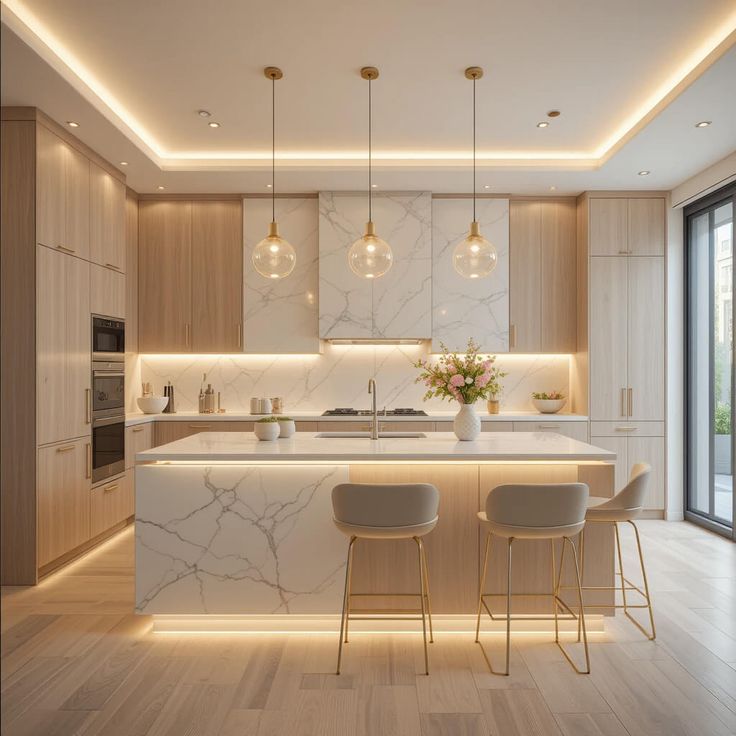
✅4. Tactile Textures That Invite Calm
Texture is the secret to making neutral master bedrooms feel luxe. Layer a few contrasting surfaces—think bouclé, wool, chenille against ribbed timber, cane, and soft leather—so the room reads rich, not flat. Aim for 3–4 key textures repeated in a few places (bed, seating, storage) to keep cohesion. Use ribbed wood on a dresser or headboard wall for subtle shadow play; add a leather bench or piped leather cushions for a tailored note; balance with soft knits and linen for breathability.
1、Rugs: Always size up to visually anchor the bed and improve acoustics. Place 8×10 ft under a queen and 9×12 ft under a king, with the front legs of nightstands on the rug and 18–24 in of rug showing at the sides/foot. Choose low–medium pile wool for durability and easy cleaning; reserve deep shags for low-traffic zones. Add a felt pad for comfort, grip, and floor protection. If allergies or underfloor heating are concerns, consider flatweave or performance fibers.
2、Curtains: Floor-to-ceiling, lined drapery deepens darkness and softens echo. Mount tracks at the ceiling to elongate walls; plan stack-back so fabric clears the window. Use blackout lining (and interlining for insulation), target 2.0–2.5× fullness, and choose headers like S-fold or pinch pleat. Pair sheers by day + blackout at night, add returns to block side light, and let hems “kiss” the floor (no puddle) for a crisp, hotel-level finish.
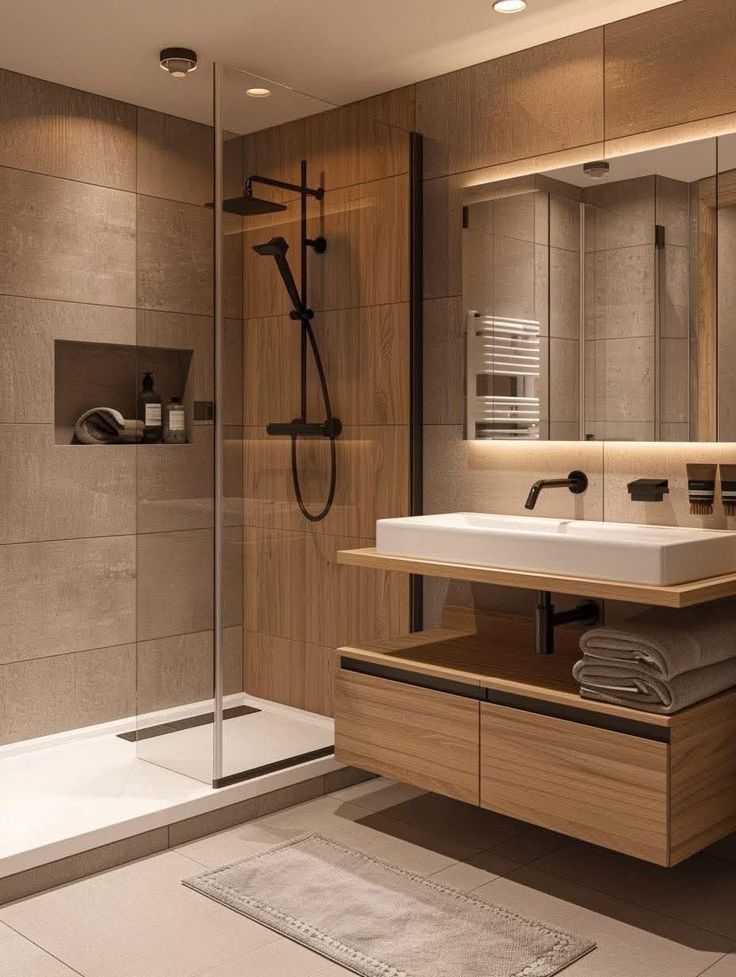
✅5. Concealed Storage & a Thoughtful Wardrobe
Clutter destroys calm—design storage into the architecture so surfaces stay clear. In wardrobes, specify full-extension drawers (14–18 in deep) so nothing hides at the back, valet rods for outfit prep, adjustable shelves (12–14 in spacing), and soft-close hardware throughout. Add LED strips with door sensors, a divided jewelry/tech drawer, and vented shoe shelves. If space allows, a walk-in should keep 36 in clear aisle and mix double-hang (≈40/80 in AFF) with long-hang and a hamper pull-out. Run everything on dimmers to keep mornings quiet and effortless.
1、Nightstands: drawers > open shelves. Drawers hide chargers, books, and meds so the room reads serene. Match top height to mattress (≈24–27 in). Add a rear grommet/USB insert for cable management, felt liners for small items, and soft-close slides so late-night rummaging stays silent.
2、Bench/ottoman: hidden storage. A lift-top bench with soft-close or gas struts at the bed foot swallows blankets and pillows. Keep overall length ¾ of the bed width and preserve 24–36 in walkway. No space? Try a window seat with lift-lid, or under-bed drawers on low casters.
3、Small rooms: mirrored wardrobe doors. Mirrors double light and visually expand the room while replacing a separate full-length mirror. Choose sliding fronts to save swing clearance, specify safety-backed mirror, and consider bronze/grey tints to reduce glare. Pair with wall-mounted sconces to free nightstand tops, and keep handles low-profile to maintain clean lines. Regular microfiber wipes keep reflections spotless and the whole space feeling ordered.
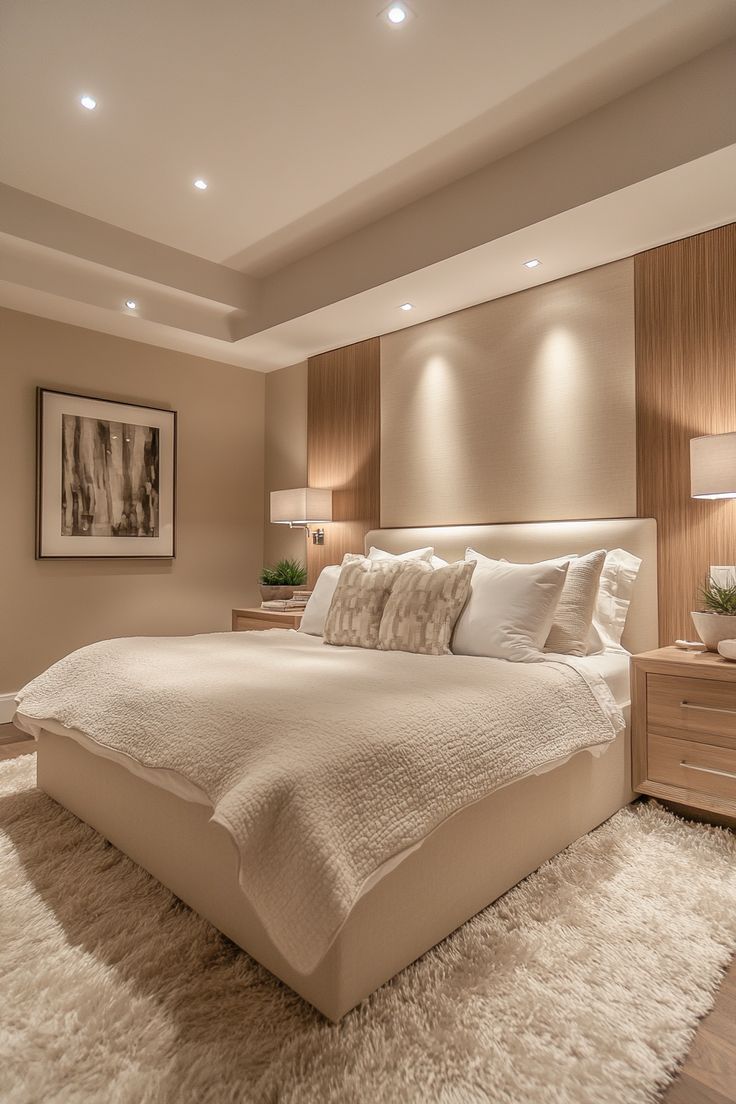
✅6. Wellness & Smart Tech (Used Discreetly)
Integrate tech that supports sleep and routine—quietly. Keep devices hidden, automate repetitive tasks, and choose platform-agnostic gear so you can upgrade later. Use scenes, sensors, and low-glare interfaces to avoid blue-light blast at night.
1、Smart scenes: Create a single “Wind Down” button (or voice cue) that fades lights to 10–30% at 2700K, sets the thermostat ~1–2°C cooler, lowers motorized blackout shades, and switches bedside outlets to charge-only (no screen time). Add a “Night Path” scene with toe-kick/under-bed LEDs on motion sensors (<5 lux) so you can move without waking your partner. Morning scene can pre-warm the room, open shades to east light, and cue soft audio.
2、Extras for better rest: Pick a DC-motor ceiling fan (<35 dB) with reverse mode for year-round comfort. A HEPA H13 air purifier sized to your room (2–4 ACH) quietly cleans at ≤30 dB on sleep mode. For sound masking, target 40–50 dB white noise, or deploy acoustic panels (NRC ≥0.7) behind the headboard/opposite walls to tame echo. Tie everything into routines so devices ramp gradually, not abruptly.
3、Charging, invisibly: Route power through grommeted nightstands and a charging drawer with Qi/Qi2 wireless pads and USB-C hubs. Add cable trays and fabric sleeves to hide wires; specify tamper-resistant, low-profile outlets behind the bed. Enable Do Not Disturb, turn on night shift color temperature on screens, and set chargers to cut off at 80–90% to protect batteries—all while keeping surfaces blissfully clutter-free.
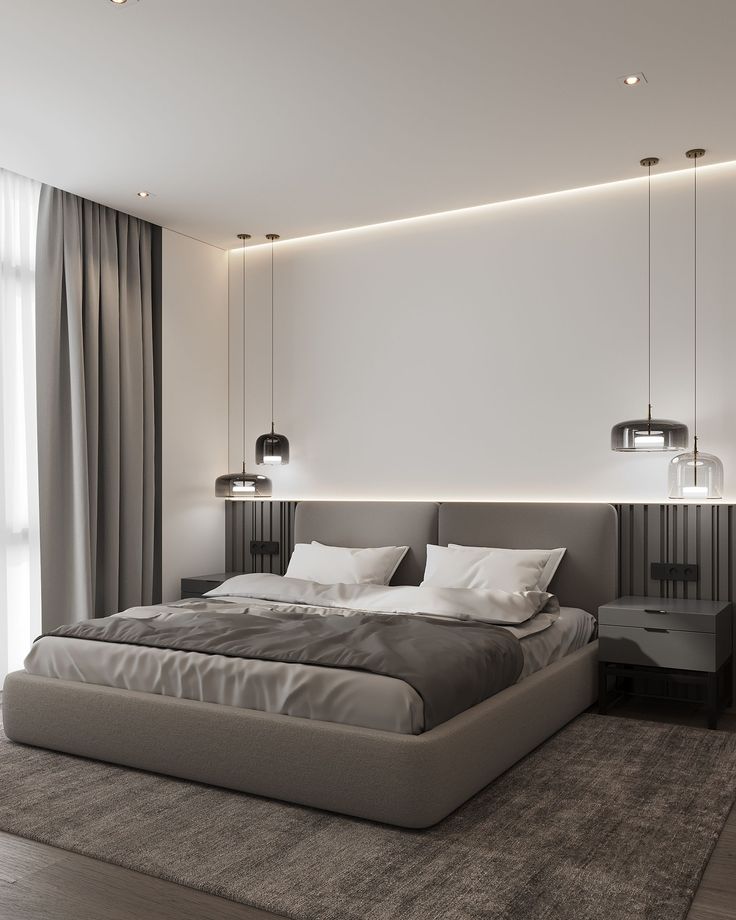
✅7. Biophilic Touches: Nature, Light, Air
Bring the outdoors in with calm, low-maintenance choices and natural finishes that soothe the senses and improve air quality.
1、Plants (easy care): Start with a ZZ plant or snake plant—both tolerate low light and infrequent watering. Add a pothos or philodendron to trail from a shelf, and a compact peace lily if you want the occasional bloom. Use breathable terracotta pots with saucers, a well-draining mix, and water only when the top 2–3 cm of soil is dry. Cluster plants in odd numbers (3/5) on a bench or windowsill to create a mini “green zone,” and place one taller specimen (e.g., parlor palm) near a window to soften corners.
2、Materials (nature first): Choose oak or walnut for the bed frame and nightstands, rattan/cane for a lounge chair, and linen for bedding and drapery. Add clay or ceramic lamps and unglazed vases for earthy texture. Keep finishes matte or honed so light reads softly; pair with wool or jute rugs for warmth. Repeat these materials 2–3 times around the room for a cohesive, biophilic palette.
3、Daylight (layered control): Mount ceiling-track sheers to diffuse glare by day and maximize light. Behind them, add blackout drapery (or lined roman shades) for restorative sleep. Ensure a generous stack-back so curtains clear the glass, and include returns to block side light. If privacy is a concern, use privacy mesh film on the lower sash so windows stay open to sky and trees while the room remains serene.
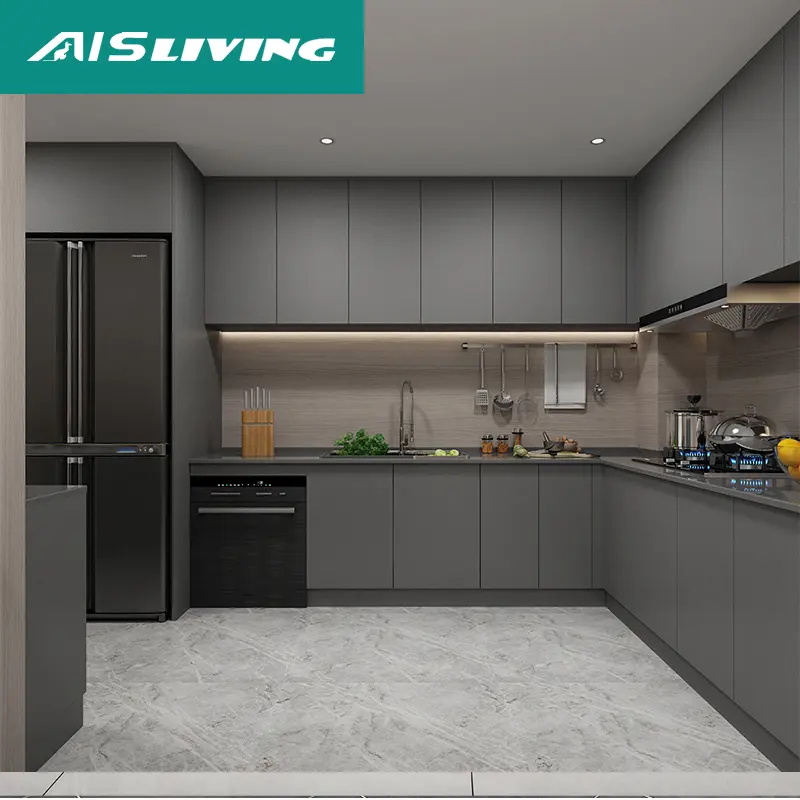
✅8. Zones Within the Master Bedroom
Carve the master bedroom into mini-destinations so the space feels purposeful and calm: a quiet sleep zone, a lounge/reading perch, a slim vanity/desk, and a practical dressing area. Define each zone with lighting, a rug, or wall treatment—then keep visual links (two repeating materials or colors) so the room reads cohesive.
1、Reading nook: Tuck an armchair beside a window or wardrobe return. Pair with a floor lamp delivering focused, glare-free light (about 300–500 lux, warm 2700–3000K). Add a side table roughly level with the chair arm (22–26 in / 56–66 cm) for a mug and book, plus an outlet for charging. A small footstool ups comfort without crowding.
2、Vanity/desk: A compact console (42–48 in W × 18–22 in D / 107–122 × 46–56 cm) doubles for grooming and quick emails. Mount a mirror with vertical side sconces at eye level for shadow-free light (CRI 90+, 3000K). Include a shallow drawer for essentials, a cable grommet, and a chair that tucks fully under to save circulation space.
3、Flow & dressing: Keep main walkways around the bed at 36 in (90 cm) where possible; minimum 30 in (76 cm) on tight sides. Place a full-length mirror (≈ 24 × 66 in / 61 × 168 cm) near the wardrobe with a valet hook for outfit prep. Use a runner or small rug to mark the dressing zone, and ensure wardrobe doors (or sliders) open without clipping the bed or nightstands.
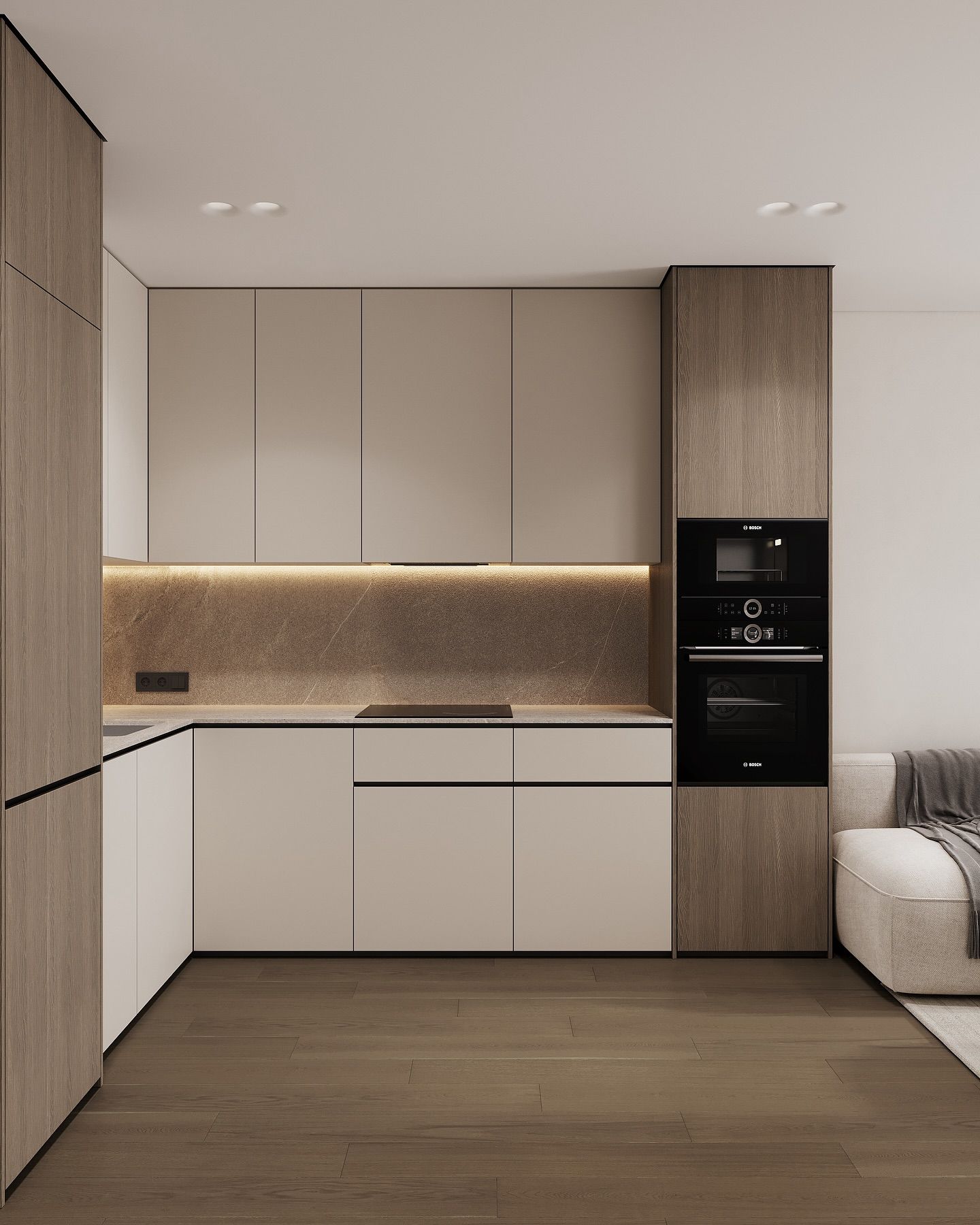
✅9. Sound, Shade & Sleep Hygiene
Good sleep is the ultimate luxury—design the room to be quiet, dark, and gently cue your senses toward rest.
1、Acoustics: Soft surfaces absorb flutter echo and reduce wake-ups. Combine an upholstered bed, a large area rug (with felt pad), lined drapery, and—if needed—fabric headboard panels or slim acoustic tiles (target NRC ≥0.6) on the wall behind/adjacent to the bed. Seal noise leaks with door sweeps, foam gaskets around frames, and felt pads under furniture. If you face street noise, consider laminated glass or a sound-masking unit set around 40–50 dB at night.
2、Darkness: Layer blackout drapes + shades for true night. Mount tracks at the ceiling with returns and generous stack-back so panels clear the glass by day; add side channels for roller shades and a small valance to block top light leaks. Aim for drapery 2.0–2.5× fullness and “kiss the floor” hems. Motorized shades on schedules (e.g., close at 9:30 pm, open at wake time) build effortless sleep routines.
3、Scent: Use subtle aromatherapy as a wind-down cue, not a room perfume. Diffuse lavender, cedarwood, or bergamot 30–60 minutes before bed (start with 2–4 drops in water) and shut off at lights-out. Avoid open flames; choose cool-mist diffusers and ventilate lightly if sensitive. Wash linens with fragrance-free detergent so gentle natural scents remain noticeable—never overwhelming.
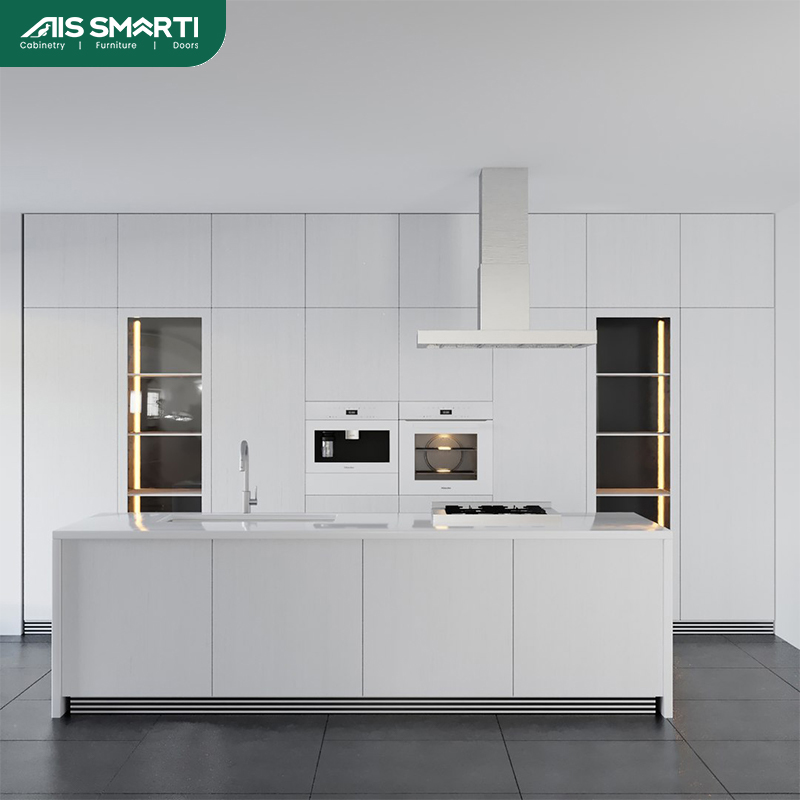
✅10. Personality: Art, Heirlooms & Edit
Make the room feel personal—but curated—by showcasing a few meaningful pieces and letting negative space keep things calm. Start with a tight palette (two main colors + one accent) and echo it through textiles and art so personality reads intentional, not busy.
1、Above-bed art: Choose one commanding piece or a tight diptych. Aim for ~⅔ the bed width (e.g., 50–72 in over a king). Hang the bottom edge 6–10 in (15–25 cm) above the headboard so art and bed read as a single composition. Keep frame profiles consistent (black oak, walnut, or brushed brass) and use non-glare glazing if opposite a window. If using a diptych, keep the gap 2–3 in (5–8 cm).
2、Metals / woods: Limit to 1–2 metals (e.g., brushed brass + matte black) and one continuous wood tone (white oak, walnut). Repeat them on lamp bases, hardware, picture frames, and furniture legs to stitch zones together. If you introduce a second wood, ensure similar undertones (both warm or both cool) and separate them with a neutral textile to avoid clash.
3、Nightstands—keep them pristine: Cap the surface at a tray, a lamp, one book, one personal object. Route cords through a grommet into a drawer with a charging station (USB-C/Qi). Choose lamps with shade centers at seated eye level for comfortable reading. Add a small valet dish for glasses/rings and schedule a weekly two-minute reset so serenity actually sticks.
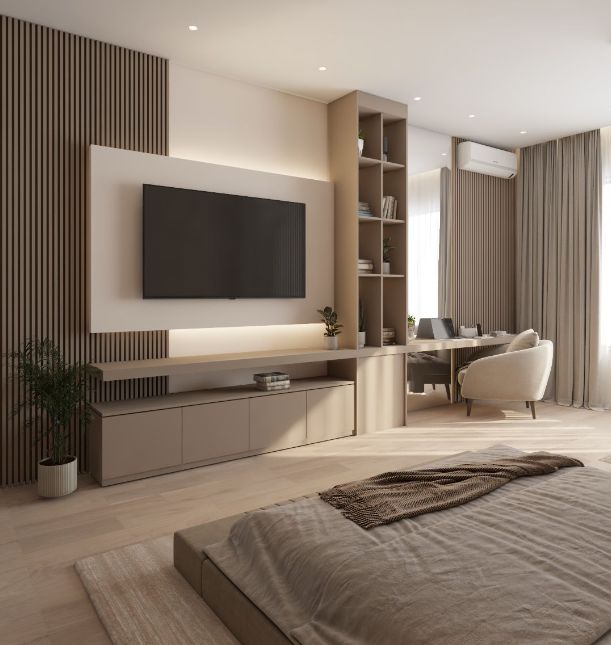
✅Master Bedroom Shopping & Planning Checklist
1、Bed & mattress (comfort first), upholstered headboard
2、Two nightstands (proper height: close to mattress top, ~24–27 in)
3、Reading sconces or table lamps (dimmable)
4、Area rug sized to bed
5、Dresser or built-in wardrobe with soft-close hardware
6、Full-length mirror, laundry hamper, storage bench
7、Layered window treatments (sheer + blackout)
8、Smart dimmers/scenes, silent fan, air purifier
9、Textiles: percale/linen sheets, duvet, throw, pillows in varied textures
✅Conclusion
A timeless master bedroom blends calm color, tactile layers, discreet tech, and storage that disappears into the architecture. Start with the bed and lighting, plan generous pathways, and add personal touches you’ll love waking up to—then edit. Your 2025 retreat will feel restful today and resilient for years to come.
For more inspiration, see 10 Top Kitchen Design Ideas That Will Help You Create Your Dream Space and Top 10 Luxury Cabinet Brands Worth Every Penny in 2025.
✅FAQs












